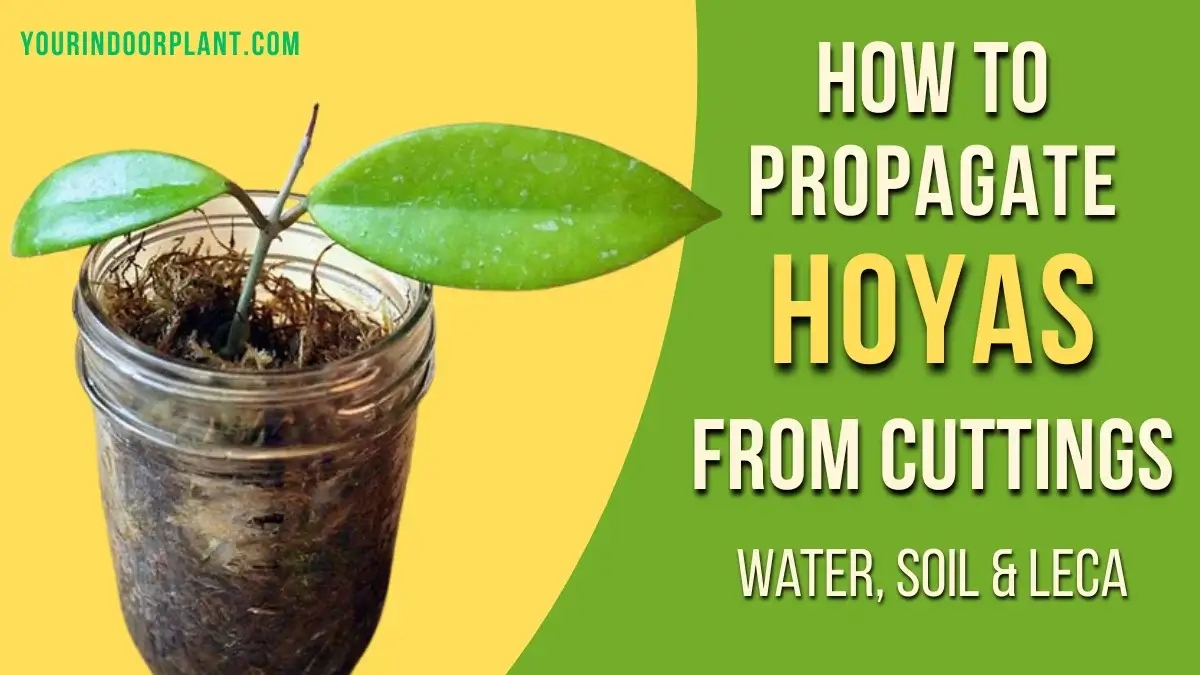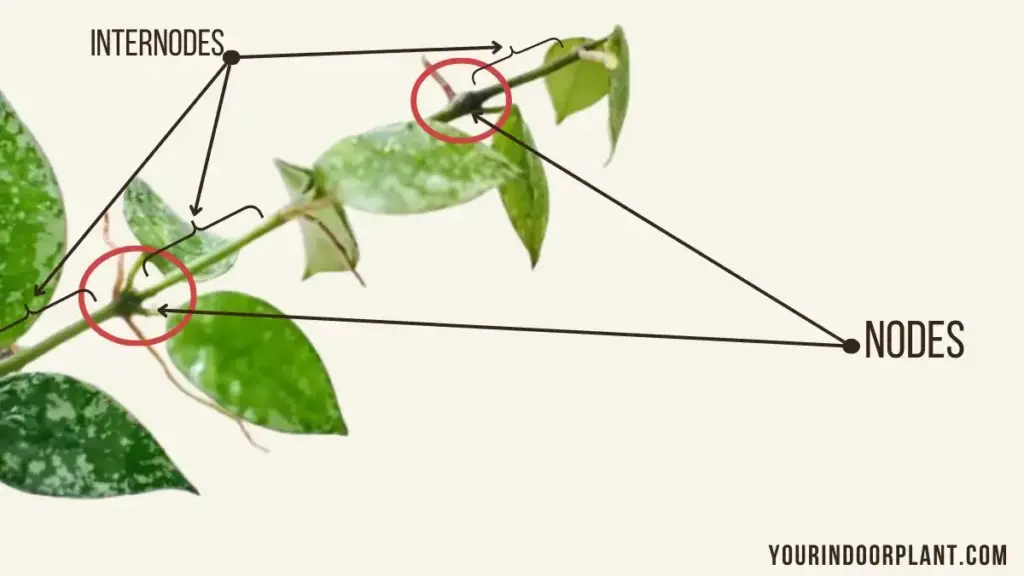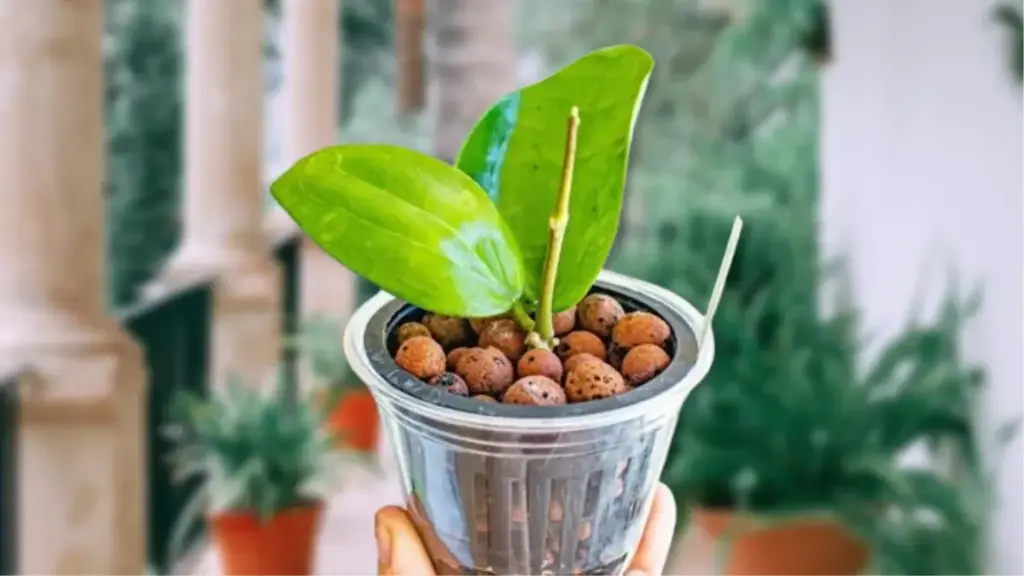How to Propagate Hoyas (Water, Soil & LECA) + Bloom Tips

If you’ve ever stared at your Hoya plant and thought, “I’d love a few more of these climbing around my windows,” you’re in the right place. Hoyas—sometimes called wax plants—are beloved for their thick, glossy leaves and clusters of star-shaped flowers. And the best part? You don’t need to buy more; you can grow them yourself from a single cutting.
In this guide, I’ll walk through how to propagate Hoyas from cuttings—whether in water, soil, or LECA. Along the way, I’ll talk about training your new plants to climb and how to coax those famous blooms from them. Grab your scissors and let’s begin.
You’re just starting with wax plants? you might also want to check my complete guide on Hoya Plant Care — it covers watering, light, and all the basics.
Quick Checklist (Before You Cut)
- Use a healthy stem cutting with at least 2 nodes.
- Make the cut just below a node with clean, sterilized scissors.
- Best season: spring–summer (active growth).
- Provide bright, indirect light and warm temperatures (60–80°F).
- Keep humidity 50–70% if possible.
- Optional: dip the cutting in rooting hormone for faster results.
Hoya Propagation Timing Guide
| Method | Roots Usually Appear | When to Pot / Transplant | Common Risk |
|---|---|---|---|
| Water | 2–4 weeks | Pot up once roots reach ~2 inches (5 cm) | Stem rot if water isn’t changed regularly |
| Soil | 3–6 weeks | After strong tug resistance (roots established) | Cutting drying out before rooting |
| LECA | 3–5 weeks | Transplant once roots are ~1–2 inches and branching | Algae growth if water not refreshed |
| Layering | 6–12 weeks | Cut and pot once new roots are visible at nodes | Root failure if soil dries out |
Step 1: Taking Healthy Hoya Cuttings
Every successful propagation starts with a good cutting. Choose a healthy stem that’s 4–6 inch (≈10–15 cm) long with at least two leaves and a visible node (that little bump where roots sprout). No node, no roots—it’s that simple.
Personally, I cut around 4 to 6 inches because that size gives me the best balance: long enough to root strongly, short enough to handle easily. Once, I cut a piece too short and waited for weeks without a single root. Lesson learned!
Use sharp, clean scissors or secateurs. “When I first started, I used dull scissors and hoped for the best,” laughs one home grower. “Turns out, a clean cut makes all the difference.”
Spring and early summer are the best seasons to take Hoya cuttings, as warmth and longer days during this active growth phase speed root development.

Step 2: Propagation Methods
2021 research published in NIH concluded that stem cutting propagation with hormonal treatment represents the most reliable method for vegetative propagation of Hoyas.
A. How to Propagate Hoyas in Water
Water propagation is popular because you can literally watch roots appear. Place the cutting in a glass jar, making sure only the bottom node should be submerged in water, keeping all leaves above to prevent rot. Change the water weekly to keep it fresh.
I love water propagation because it feels like a daily science experiment on my windowsill. I’ve had roots show up in as little as 12 days on one cutting, while another stubbornly sat for 5 weeks before finally sprouting.
Better Homes & Gardens notes that roots usually sprout within 2–4 weeks in water under warm (73°F to 77°F), bright, indirect light. Once they reach about 5–10 cm long, your cutting is ready to move into soil or LECA.
Pros: Easy to monitor, beginner-friendly.
Cons: Transition shock when moving to soil.
B. Propagating Hoyas in Soil
Soil propagation skips the transition step. Use a light, airy mix: orchid bark, perlite, and coco coir are great options. Keep the soil moist but not soggy. Some growers cover the pot with a humidity dome or plastic bag to speed rooting.
You won’t see roots forming in soil. The trick I use? A gentle tug test at about 4–6 weeks. When I pulled mine on day 36, I felt that little resistance — and nearly danced around the kitchen because I knew it had worked.
Pros: No transplant shock.
Cons: Harder to confirm root growth.
C. Propagating Hoyas in LECA
LECA (Lightweight Expanded Clay Aggregate) is a favorite among plant collectors. Rinse the clay balls, place your cutting so the node rests between them, and add water just to the bottom. The clay wicks moisture up without drowning the cutting.
I’ve found LECA to be the most “set it and forget it” method. The roots stay visible, but rot is far less common. Once roots show, I add a diluted fertilizer — without it, my cuttings looked healthy but just… stalled.
Pros: Rot-resistant, visible roots, low maintenance.
Cons: Requires hydro-friendly fertilizer.
Want to go deeper into nutrient mixes, timing, and best practices, see the article Plant Fertilization Techniques in LECA for a detailed guide.

Step 3: Potting Up & Aftercare
Once your cutting has a strong root system, move it into a small pot with orchid mix. Hoyas like snug homes, so don’t go too big too fast. Overpotting can slow growth, I once tried “spoiling” a cutting with a big decorative pot, but it sulked for months without growing. Small pots keep them happy.
These plants grow slowly, so patience is part of the deal. Expect 2–3 years before they outgrow their starter pot.
Training & Trellising Hoyas
Hoyas are natural climbers. Giving them a trellis, moss pole, or wire hoop not only looks good but also strengthens vines and shows off their leaves.
One grower shared, “I looped my Hoya onto a hoop trellis, and within months, it started producing way more peduncles than when it was trailing.”
Guiding vines gently with soft ties encourages a fuller plant and better airflow.
How to Encourage Blooming in Hoyas
Hoyas are famous for their waxy, sweet-smelling flowers—but getting them to bloom can be tricky.
- Light: Bright, indirect light is key. Morning sun is perfect; too much shade and you’ll get no blooms, too much direct sun and the leaves will scorch.
- Nutrition: Feed monthly with a balanced liquid fertilizer. To specifically encourage blooms, Clemson University’s Home & Garden Information Center (HGIC) recommends switching to a liquid fertilizer with an NPK ratio like 2:1:2 or 3:1:2, which provides the ideal nutrient balance for flowering. A liquid formula is preferred over slow-release granules due to the infrequent watering needs of Hoyas.
- Don’t move peduncles: (Peduncles are the small stalks that hold flower clusters); Flowers come from old spurs, so never cut them off. A little patience and they’ll bloom again.
- Pot size: Hoyas like being a bit root‑bound, which often encourages flowering. I use 3‑inch pots for young plants and 6‑inch for mature ones — and in my experience, the smaller the pot, the better the blooms.
Think of them as housemates who like stability: once they’re happy where they are, they’ll reward you with flowers.
Species-Specific Propagation Guidelines
- Hoya carnosa (Wax Plant)
Hoya carnosa is one of the easiest Hoyas to propagate, and that’s why it’s often the first people try. Cuttings with a couple of nodes root quickly in either water or soil, usually in about 2–4 weeks. Studies from the University of Florida IFAS Extension confirm that roots consistently emerge at the nodes, which are little powerhouse sites for new growth. Under warm temperatures (68–75°F) and high humidity, success rates can be as high as 90–95%. No wonder this one is such a classic. - Hoya compacta (Hindu Rope)
Propagation is trickier with this curly-leaved beauty. Its twisted vines and heavy cuticle make rooting a slower process, often stretching to 4–6 weeks. Gardeners swear by using rooting hormone and keeping it slightly warmer to coax it along. Scientific research on similar thick-stemmed Hoyas shows that auxins really do speed up root initiation. Just keep an eye out for airflow—its tightly packed foliage tends to trap moisture, and that can invite fungal problems if conditions are too damp. - Hoya kerrii (Sweetheart Hoya)
This is the “Valentine’s Day Hoya” you often see sold as a single heart-shaped leaf in a pot. Cute, yes—but if it’s just a leaf, it won’t ever grow into a full plant. The reason is simple biology: no node, no new shoots. Studies on Hoya propagation confirm that only cuttings with nodal tissue can produce new growth, since that’s where the buds live. Joy Us Garden even tested this and found that rooted leaves sat unchanged for 10 months. So if you want more than a decorative heart, make sure your cutting has at least one node. - Hoya pubicalyx
This one is a propagation sprinter. In water, roots often appear within 2–3 weeks, much faster than in soil. Practical tests showed roots forming about 30% faster in water. And once those roots are established, pubicalyx is a champ at adapting to semi-hydro setups like LECA, thanks to its high natural auxin levels that encourage strong adventitious root growth. - Hoya obovata
Obovata has those big, round leaves that make it look so striking—but they’re also what make propagation tricky. Larger leaves lose water faster, which means cuttings can wilt before they root. Keeping them in moss or soil with high humidity is the secret here. A humidity dome or even a plastic bag makes a world of difference. Controlled experiments have shown success rates jumping from about 35% in dry air to 85% when humidity is kept around 80–90%. Once established, obovata is tougher, but in the beginning it really needs that extra moisture. - Hoya linearis
Linearis is delicate by nature. Its fine, trailing leaves dry out quickly, so it needs extra humidity to get going. In its native Himalayan habitat, it grows in cool, moist forests, and you have to recreate a bit of that at home. Gardeners have had much better success rooting it in sphagnum moss rather than water, since moss holds both moisture and air. Controlled studies back this up, showing 80% success at 75–90% humidity versus under 30% in drier conditions. With patience and the right environment, it rewards you with graceful, fuzzy trails.
Troubleshooting Common Problems
- Yellowing leaves? Too much direct sun. I scorched mine once by leaving it in an unshaded west window.
- No blooms? Check your light and fertilizer. I switched from nitrogen-heavy feed to bloom formula and saw flowers the next season.
- Cutting rotting in water? Keep only one node submerged and refresh water weekly. My early mistake was dunking two nodes — rot city.
Hoya Propagation FAQs
Can you root Hoya in water?
Yes, Hoya cuttings root well in water within 2–4 weeks. Transfer to soil once roots are about 2 inches (5 cm) long.
How many nodes do I need on a Hoya cutting?
At least 2 nodes are recommended. One should be submerged or in contact with the medium, while the other develops new growth.
When should I use rooting hormone on Hoyas?
Rooting hormone is optional but can speed up rooting in soil or LECA. It’s most useful for thicker-stemmed species or slow rooters.
How do I prevent rot in Hoya cuttings?
Always use sterilized tools, avoid burying leaves in water or soil, and refresh water weekly. Provide airflow and avoid overwatering.
Can you propagate a Hoya from a single leaf?
A single leaf may root, but it usually won’t grow into a full plant. For reliable propagation, include at least one node with the cutting.
What is the best season to propagate Hoyas?
Spring and summer, during active growth, give the best results. Cuttings root faster in warm temperatures with longer daylight hours.
How long do Hoya cuttings take to root?
Depending on the method: 2–4 weeks in water, 3–6 weeks in soil, and 6–12 weeks for layering.
When should I pot up my Hoya cutting?
Pot up when roots are at least 2 inches (5 cm) long in water, or when the cutting resists a gentle tug in soil.
Conclusion
So, how do you propagate Hoyas? Take a healthy cutting (I cut around 4–6 inches), root it in water, soil, or LECA, then give it time and care. Train it onto a trellis, feed it right, and with time, you’ll have blooms that smell like candy. Most Hoyas propagate the same way, but some species like Hoya carnosa root especially fast in water.
Propagation isn’t just multiplying plants — it’s practicing patience and watching something small grow into beauty. Start with one cutting, and soon you’ll have a family of Hoyas climbing through your home.
